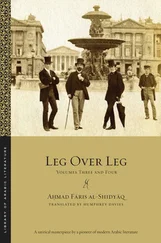or a khadlah ,
“a woman with thick, rounded legs, or whose limbs are full-fleshed with fine bones”; synonym khadlāʾ ,
or a khallah ,
“a light woman”
or a daḥmalah ,
a female who is “huge and full-bodied”
or a dumaḥilah ,
a female who is “fat and comely of physique”
2.14.29
or a miksāl ,
[literally, “sluggish”] “epithet for a coddled girl who can scarcely get up from her seat (a compliment)”
or a rakhīmah ,
[“a woman with a thrilling voice”] “one says rakhumat al-jāriyah , meaning ‘the girl acquired a thrilling voice’; adjective rakhīmah and rakhīm ”
or a raqīmah ,
“a noted, intelligent woman”; and under b-r-z “a ‘noted woman’ ( imraʾah barzah ) is one whose good qualities are conspicuous ( bārizah ), or ‘a bold, mature, magnificent’ female, etc.”
or a mīsānat al-ḍuḥā ,
“a compliment: a female who slumbers deeply in the forenoon”; similar is “ [imraʾatun] naʾūmu l-ḍuḥā (‘a woman who sleeps in the forenoon’)”
or a ḥasanat al-khafiyyayn ,
[literally “comely of the two that appear”] meaning her voice and her footprint; one says, “if the two things that appear of a woman are comely, the rest of her will be comely”
or a ghāniyah .”
“a woman who is pursued and does not herself need to pursue, or whose beauty is such that she may dispense with adornment”
(Note: women who are brevo-turpicular, magno-pinguicular, vasto-oricular, ignobilar, exiguo-deformicular, flaccido-ventricular, obesar, rancidular, nigero-malo-incultular, and hyper-rustico-rapacular are more sensual and bolder than any of the above.)
2.14.30
The continuation of this description of feminine charms will come in Chapter 16 of Book Four, as I have no strength or energy left and imagine my reader doesn’t either. I merely declare: Indeed, were all these charms in all their variety present at such a happy gathering, he would want to string them all on a single thread and put them round his neck, like prayer beads round the necks of God’s Chosen Friends, and I refer any who challenge me on this to the story of Our Master Sulaymān, peace be upon him, whose thread, for all that he was given wisdom — and what wisdom! — had on it a thousand women, three hundred of whom were concubines, the rest great ladies, which means that each day he had two-and-half-plus-a-bit women.
2.14.31
Why, were any man to see the sun rising, the full moon coming out, and the stars shining, the first thing it would occur to him to say would be, “Now that the sky has been adorned with these glorious heavenly bodies, when will my chamber be adorned with one of their sisters, or two, or three, or ten, or an entire string of prayer beads?” Likewise, if he beheld a dip or a mound, two hills standing next to one another or a perky little bump, a large dome or a high mountain, a hollow or a rounded dune, a little sand hill or the stern of a ship, a branch bending or a sea surging, a trough between waves, a peacock, apples, pomegranates, a necklace of strung pearls, or anything else that pleases the eye, he would immediately fantasize about a woman; indeed, he might imagine one whom he’d never even seen and on whom he’d never clapped eye. And if he beheld a ship plowing the high seas, its sail set, he would liken it to a woman strutting the highways in her fine clothes, as a certain venerable Bag-man used to do. If he beheld two doves feeding each other with their mouths and cooing to each other, he’d say, “Would there were with me now one whom I might feed and who might feed me too, to whom I might coo and who might coo to me, whom I might peck and who might give me a peck!” If he beheld a rooster among his hens, feeding them morsels of his own food, flapping his wings at them, bristling and puffing up his feathers, and then stalking among them, he would want to be like him.
2.14.32
Enough, though, of such low-mindedness and abuse of that human form which is said to have been shaped in the image of the Creator (too sublime though He be to have like or peer) — despite which, should you come across him down Our Master Yūsuf’s well even, or on board Our Master Nūḥ’s ark, or in the belly of Our Master Yūnus’s whale, or on the back of Our Master Ṣāliḥ’s 557camel, or with the People of the Cave, he’d be shrieking, “A woman! A woman! Who will get me a woman!”, and if you set him down in a
bunānah ,
“a verdant meadow”
or a raqmah ,
“a meadow, or the side of a watercourse, or the confluence of its waters”
or a daqīrah ,
“a beautiful meadow covered in vegetation”
or a radīfah ,
“a green meadow”
or a ghalbāʾ ,
“a dense garden”
or a ʿuljūm ,
“a grove of many palms”
or a makhrafah ,
“a grove”
or a ḥadīqah ,
“a meadow with trees”
or in a chamber or an upper room or a compartment or a ladies’ bower or an alcove or on a dais,
2.14.33
or a sidār ,
“something like a ladies’ chamber ( khidr )”; the khidr is also called a muwaṣṣad
or a ḥushshah ,
“a large dome”
or a junbudhah ,
“[a thing] like a dome”
or a ʿarsh ,
“a tent, or a housing used for shade like a trellis”
or a kirḥ ,
“a monk’s abode”; synonym rukḥ
or a kūkh ,
“a hump-shaped house of reeds”
or a ṣawmaʿah ,
[a monk’s cell] “an abode of the Christians”
or a rīʿ ,
“a ṣawmaʿah ”
or a fanzar ,
“a chamber placed on top of a piece of wood of some sixty spans as a watch-tower”
or a bahw ,
[a hallway or antechamber] “a chamber advanced in front of other chambers”
2.14.34
or a ḥillah ,
“a group of residential dwellings, or a hundred dwellings, or a place for sitting, or a gathering place”
or a fusṭāṭ ,
“the structure called a surādiq (‘an enclosure around a tent’), similar to a miḍrab ”
or a kibs ,
“a dwelling of mud”
or a ḥifsh ,
“a very small dwelling”
or a janz ,
“a small dwelling of mud”
or a khuṣṣ ,
“a dwelling of reeds, or….” 558
or a radhah ,
“the largest kind of chamber”
or a majlūh ,
“a dwelling that has no door or anything to preserve its privacy”
or a waʾm ,
“a warm dwelling”
or a uqnah ,
“a dwelling of stone”
or a ṭirāf ,
“a dwelling of hide”
or a wasūṭ ,
“a dwelling like the hair tent, or smaller”
2.14.35
or a ṭanaf ,
“the projecting roof over the door of a house”
or a nuzul ,
“a place prepared for guests to stay in”
or a maghnā ,
“an abode whose people had no need of it and so departed, or [a house] generally”
or a maʿhad ,
“an abode dedicated to a specific purpose”
or a maʿān ,
“a home or an abode”
or a nadī ,
“a place where people gather and sit by day, or…” 559
Читать дальше












